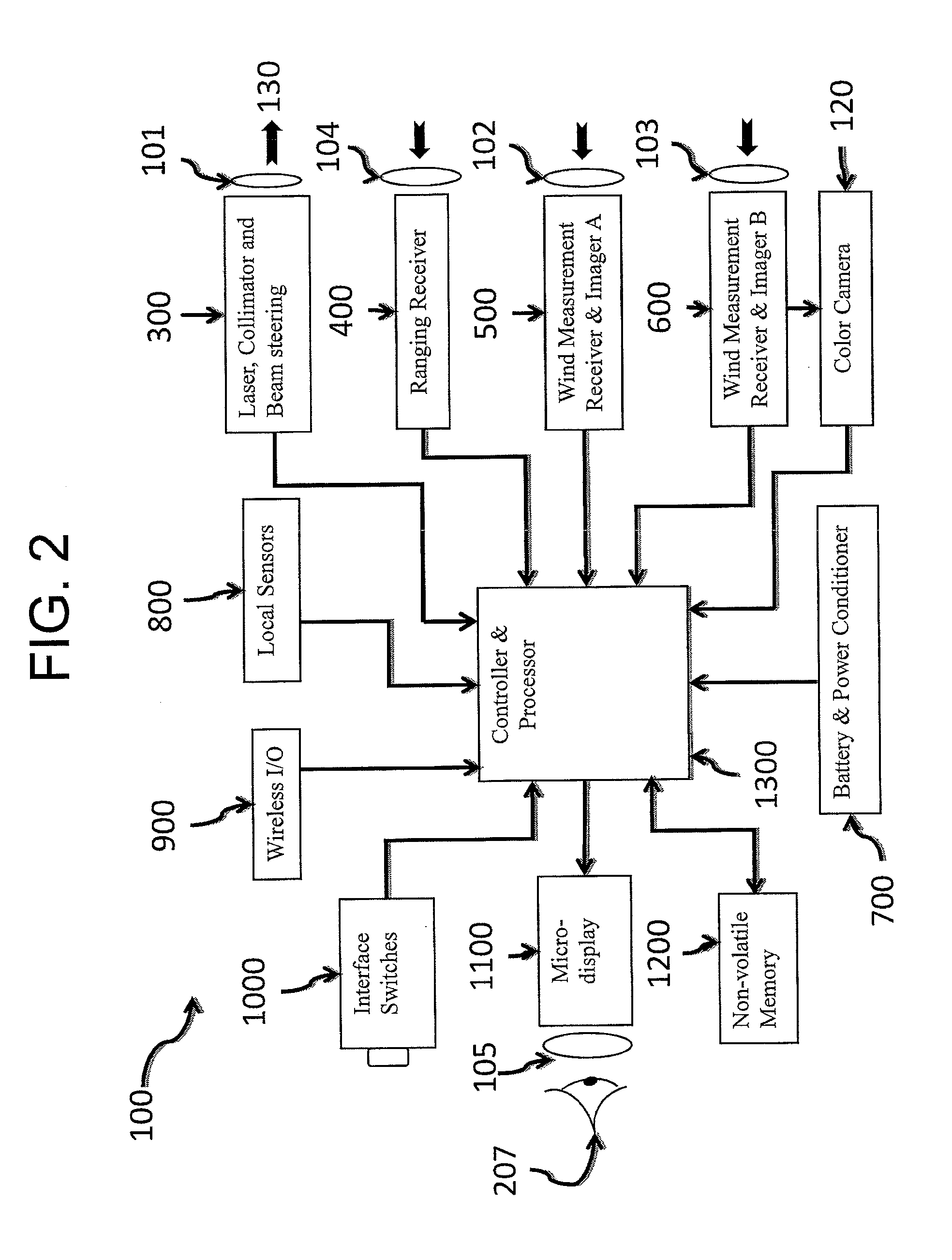Electro-optic system for crosswind measurement
a technology of optical system and crosswind measurement, applied in the direction of instruments, analogue processes, and specific applications using reradiation, can solve the problems of inability to conduct these functions, inability to achieve the effect of achieving the effect of achieving the effect of achieving the effect of achieving the effect of achieving the effect of achieving the effect of achieving the effect of achieving the effect of achieving the effect of achieving the effect of achieving the effect of achieving the effect of achieving
- Summary
- Abstract
- Description
- Claims
- Application Information
AI Technical Summary
Benefits of technology
Problems solved by technology
Method used
Image
Examples
further embodiment
[0139]According to a further embodiment, the XMS system 100, 100A in the above embodiments can be specially configured for use with existing riflescopes, thereby allowing the user to retain the direct view optics (DVO) which do not rely on battery power. An example of a system 100B according to the further embodiment is illustrated in FIG. 26. Particularly, this XMS 100B is illustrated as a modification to the alternative embodiment system 100A utilizing a single wind measurement channel 500. Accordingly, the system 100B may also include a dual divergence laser collimator 300A of the above-described alternative embodiment. However, the principles of this further embodiment can also be applied to embodiments of an XMS 100 utilizing two wind measurement channels 500, 600, e.g., by replacing the eyepiece 105 with the symbology projector 200 which is described in more detail below.
[0140]As illustrated in FIG. 26 (described in more detail below) the system 100B is mounted on an existing ...
second alternative embodiment
[0146]The embodiment first described in this application (referred to hereafter as “first embodiment”) utilizes a cross-covariance time delay to calculate the path-weighted average crosswind. According to the first embodiment, the calculated crosswind can be processed by a ballistic calculator, using the measured range and environmental and ammunition parameters, to provide an offset aim point (OAP) and confidence metric whereby a user can repoint the weapon to hit targets accurately and efficiently with a first round. As described above, the first embodiment uses a pair of side-by-side horizontally-separated receiver channels 500 and 600, thus incorporating two apertures 102 and 103 (objective lenses) and two detectors 113 and 119 (digital imagers or PIN or APD photodiodes) to collect the reflected laser light from a distant laser spot illuminated by the user. In the first embodiment, each receiver channel 500, 600 provides a time varying signal due to the intensity changes caused ...
PUM
 Login to View More
Login to View More Abstract
Description
Claims
Application Information
 Login to View More
Login to View More - R&D
- Intellectual Property
- Life Sciences
- Materials
- Tech Scout
- Unparalleled Data Quality
- Higher Quality Content
- 60% Fewer Hallucinations
Browse by: Latest US Patents, China's latest patents, Technical Efficacy Thesaurus, Application Domain, Technology Topic, Popular Technical Reports.
© 2025 PatSnap. All rights reserved.Legal|Privacy policy|Modern Slavery Act Transparency Statement|Sitemap|About US| Contact US: help@patsnap.com



